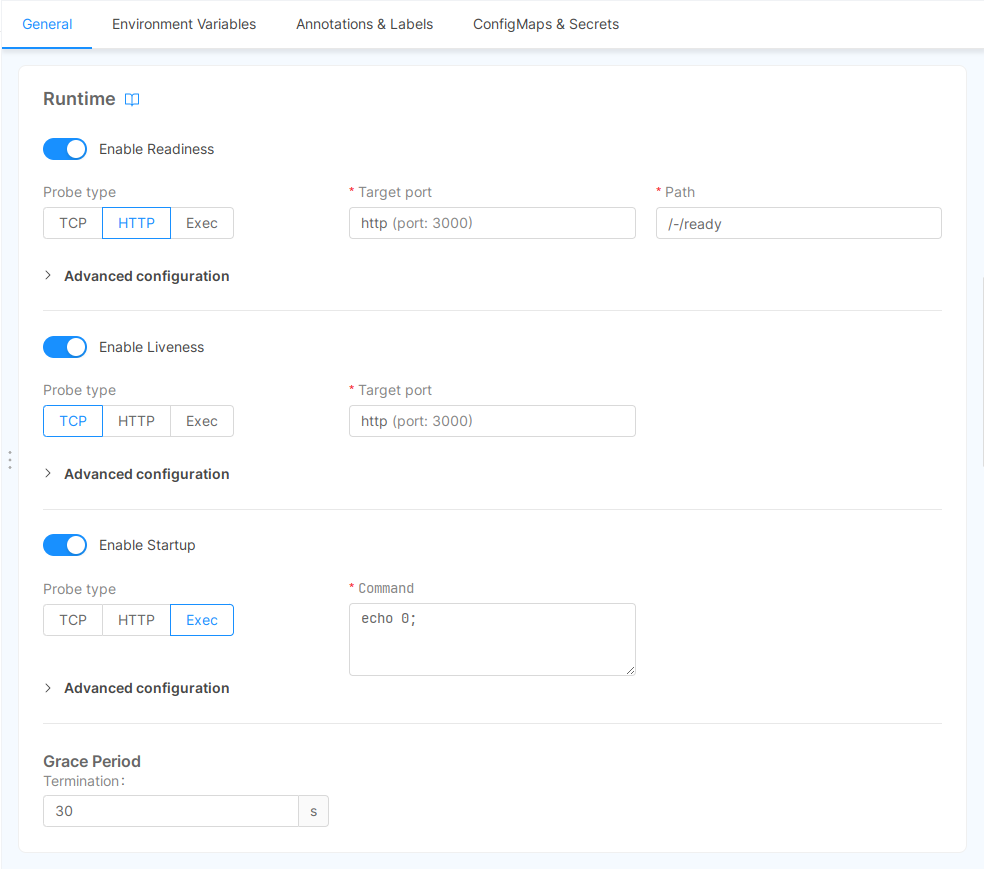Microservice Runtime Resources
The Runtime Card contains settings that will be used at Runtime by the underlying cluster to manage the micro-service status.

Probes
In a micro-service, three different kind of probes can be exposed:
-
Readiness: tells the cluster orchestrator when a micro-service can accept traffic;
-
Liveness: tells the cluster orchestrator if a micro-service is up-and-running.
-
Startup: tells the cluster orchestrator if a micro-service has been completely booted.
infoStartup Probe configuration will be available from mid-January 2024.
To learn more about probes, please refer to the Kubernetes official API documentation.
The Runtime Card enables the developer to manage the following fields for each probe:
-
Path: represents the endpoint of the microservice that will be used to check the probe. If no value is provided:
- for Readiness Probe,
/-/ready/will be used; - for Liveness Probe
/-/healthz/will be used.
If probes are available on different endpoints, a different endpoint can be provided with the field and that route will be used.
- for Readiness Probe,
-
Port: defines the container port where the probe is exposed, from the list of ports defined in the Container Port section. If no value is provided, the default port of the micro-service will be used
-
Initial delay seconds: defines the number of seconds that need to pass after the container has started before the probe is invoked for the first time.
-
Period seconds: tells how often the probe needs to be invoked (Kubernetes default is 10 seconds, while the minimum value allowed is 1).
-
Timeout seconds: controls the probe timeout in seconds (Kubernetes default is 1 second, while the minimum value allowed is 1).
-
Success threshold: the minimum consecutive succeeded responses from the probe to consider it successful (Kubernetes default value is 1, while the minimum value allowed is 1).
warningFor livenessProbe this parameter has a fixed value of 1
-
Failure threshold: the minimum consecutive failed response from the probe to consider it failed. (Kubernetes default value is 3, while the minimum value allowed is 1).
Termination Grace Period
When a micro-service is shut down, Kubernetes allows the definition of a grace period to wait before the service gets forcibly closed: technically, it's the time waited between sending a SIG_TERM and a SIG_KILL.
This field allows to choose the termination period of a micro-service, which is by default of 30 seconds, like the Kubernetes default value.